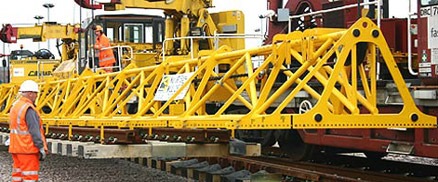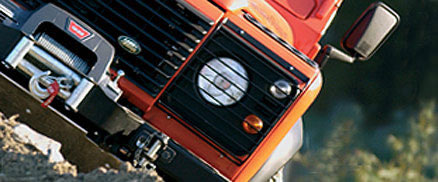March 28th, 2010
Falls kill more than 300 construction workers every year and hurt thousands. Deadly falls on the job are from unprotected roof edges, roof and floor openings, scaffolds, ladders, structural steel, leading edges, open shafts, and more. What you need to know:
Protect Yourself
- Whenever fall protection is needed, make sure you have the right fall-protection system, know how it works, get trained to use it – and use it.
- Where eliminating the hazard, guardrails, or safety nets won’t work, you need personal protective equipment (PPE) – fall-restraint systems, personal fall-arrest systems, or work positioning systems. Restraint systems keep you from falling. Fall-arrest systems stop falls. You will need a full-body harness if you use one of these systems.
- A full-body harness has straps worn around your trunk and thighs, with one or more D-rings in back to attach the harness to other parts of the system. If you fall, a properly fitted harness spreads the stopping force over your thighs, pelvis, chest, and shoulders.
Choosing a Harness
- Learn about the types of fall hazards on your job.
- Choose the right type of fall protection for each type of fall hazard. Never use a body belt, seat only harness, or chest-only harness for fall protection. Use a full-body harness instead.
- You can use a harness with an anchorage, a lanyard, a retractable lifeline, a vertical lifeline, a travel rail, a horizontal lifeline, a fall arrester, and/or a shock absorber. A fall-arrest system should let you fall no more than 6 feet. A work-positioning device should let you fall 2 feet or less.
- A registered professional engineer should design a fall protection system. A qualified person must supervise the setting up.
- Make sure the harness fits you and is comfortable, to prevent body strain. You can get shoulder and back pads to reduce harness pressure. Full-body cross-chest harnesses are more comfortable for women and can reduce bruising when falls are stopped.
Posted in Arbil Lifting Gear |
March 28th, 2010
For those of us that regularly head off the beaten track it goes without saying how important it is to be prepared for a recovery situation. If you wish to drive through very deep mud or climb a slippery slope and you know your vehicle will not be able to do it without some assistance then use of a snatch block to change the direction of pull may be the
solution. A useful piece of recovery equipment that should be included in your recovery gear is a snatch block which enables you to retrieve loads that are double a winch’s capacity by reducing the load on the winch by half.
Designed in Australia by ARB engineers, the Snatch Block 9000 features a revolutionary, computer optimised two-piece polymer pulley design for increased functionality and safety during a vehicle recovery. The Snatch Block 9000 has been tested to withstand the extremes of off-road competition winching. The snatch block features rounded safety edges to protect against pinch points during recovery situations, and also allows for easy one handed loading and unloading of the cable or rope. The working load encountered during winching also has a positive effect on the snatch block by causing the plates to press together for extra support.
Suitable for use with bow shackle sizes up to 8.5 ton, the snatch block features high strength, low density materials which reduce the total weight of the block by up to 50% over other comparable rated snatch blocks. The design includes self-righting plates to eliminate the need to correctly position the block while introducing cable tension, while the inner pulley is made from self lubricating crystalline polymer to enable operation under high loads without the need for lubrication.
The following uses and advantages are associated with using snatch blocks:
• Doubles pulling power.
• Winching from difficult angles.
• Overheating of electric winches reduced.
• Current draw is reduced and are therefore kinder to batteries.
Posted in Arbil 4x4 |
February 23rd, 2010
The new jack on the block is the Pow’r Claw Track Jack. This jack has been specifically designed to reduce the risk of injury to the operator, notably back injuries. The Pow’r Jack is an extremely versatile piece of kit and is already setting new standards for safety and productivity amongst track maintenance crews around the world.
The Pow’r Claw came about after heavy use with track maintenance crews in the U.S. and Canada. The Pow’r Claw has a variety of features. The design of the tool is totally inverted which keeps out water and dirt from the jack increasing longevity and performance of the Jack. The pistons are constructed from hard chrome, a resistance to corrosion increasing Jack life.
The biggest feature of the Pow’r Claw Track Jack is operator safety. When this Track Jack was designed it was designed specifically for one man operation – operators whose daily job involved lifting heavy loads such as concrete ties. With a low lever bar force this greatly reduces the risk of injury to the back. The bar is designed not to kick back and injure the operator should it be accidentally released.
Benefits of the Pow’r Claw Jack
- Although light weight weighing only slightly more than a mechanical jack it is extremely heavy duty.
- It can be operated in a horizontal position making it easier for lining or gauging track.
- Offers precise lowering and lifting that is accurate.
- It has a large solid base which provides more surface area and greater support in soft ballast.
- Low handle effort allows one man operation easily for lifting heavy loads such as concrete tie sections.
- Has a safety key lock which prevents the jack toe body from swivelling giving safe and stable support.
- Can be used as jack from either the top or toe.
- Has a removable pump which allows the self contained Jack to be converted to a remote style.
Posted in Arbil Rail |
February 23rd, 2010
When it comes to selecting a winch you can’t just choose the first one that you come across. Winches generate high force and careful consideration needs to be because if the wrong one is chosen it can be dangerous. The paramount concern should be that of safety. Secondly you need to ask yourself a few questions as to why you need a winch – what environment will you be using the winch in and are you a beginner or an expert when it comes to hoisting in the load.
Another important factor when selecting a winch is whether the winch should have the freewheel feature. Freewheels are usually found on ratchet winches. The purpose is to let you pull the cable freely from its drum and then attach it to the load you want to pull in.
It may be this type of winch does not suit your requirements, in which case a self locking winch, brake winch or worm gear winch is probably more appropriate for the task in hand. Any job that requires the lifting of loads a ratchet pulling winch should not be used.
Look at the environment in which you will be using your winch. Environmental conditions such as harsh salt water, causes of potential damage and abuse all need to be considered. How often will the winch undergo maintenance checks? All of these need to be part of the decision making process. For these conditions then a larger winch should be used that has protective guards to prevent damage to the winch.
It is difficult to calculate the exact amount of load that is to be pulled with the winch as different loads have different weights. If using one of the Dutton Lainson hand winches then the total capacity that these types of winches can handle ranges between 35 to 55 pounds. To winch this weight range you should only need to use one hand. If you cannot reel in the load with one hand then the weight bearing is too much for the winch to handle.
Posted in Arbil Lifting Gear |
February 23rd, 2010
Recovery Straps are nylon straps that have the ability to stretch under heavy load and then spring back to almost the original length of the strap. Snatch straps as they are known are constructed like a bungee rope and the combination of the recovery vehicle pull and the tension in the strap creates a ‘snatching’ effect that can pull a stranded vehicle free from being bogged or unable to move under its own power. When used in accordance with these guidelines, vehicles may be recovered with minimal injury risk to people or damage to vehicle equipment.
Always make sure the strap you choose meets the required rating. If the strap has a too light breaking strength then it is prone to breaking under the load. On the other hand a strap with a too heavy breaking strength may not stretch properly causing more damage on the recovery points leading to damage and possible injury.
Before you attempt to recover your stranded vehicle using the snatch strap, make sure you inspect the strap to determine it is in good condition and not damaged. If the strap is wet, dirty or torn it will not perform the job in hand – a strap that is wet will be 20% under full strength where a damaged strap may break.
Roll out the straps between the two vehicles in the shape of an ‘S’. Ensure there are no twists in the strap and make sure there is 2-3 metres slack between both vehicles. If the strap is not long enough do not attempt to join straps, as should the straps break serious injury and damage can occur. Only secure the straps to proper recovery points which are correctly rated on the vehicles.
Important safety recommendations when using snatch straps:
- Before purchasing the snatch strap check the packaging for the stated Minimum Breaking Strength which should be between 2 and 3 times the vehicle’s gross vehicle mass.
- If you intend to use a snatch strap then you should consider completing a recognised four wheel drive training course for advice on the correct usage of a snatch strap.
- Never use a snatch strap for conventional towing or everyday lifting.
Posted in Arbil 4x4 |


